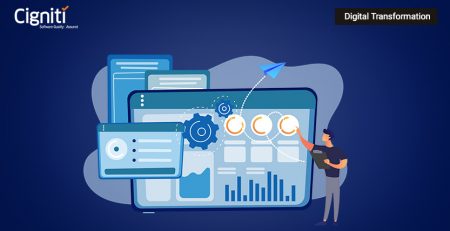Digital Assurance for 5G Networks: Ensuring a Seamless Future
|
Listen on the go!
|
The rapid advancement of communication technologies has paved the way for the deployment of 5G networks, promising unprecedented speeds, low latency, and enhanced reliability. As 5G technology becomes increasingly integrated into our daily lives, ensuring its robustness and security has never been more critical. Digital assurance, a comprehensive testing and verification approach, plays a vital role in safeguarding the performance, stability, and overall quality of 5G networks. In this article, we will delve into the concept of digital assurance for 5G networks and explore various testing types involved in the 5G network space.
Understanding Digital Assurance for 5G Networks
Digital assurance refers to the systematic and comprehensive approach to validate the functionality, security, and performance of digital services and products, including 5G networks. It encompasses a wide range of testing methodologies and practices to ensure that 5G networks meet the required standards and deliver the expected user experience. The Importance of Digital Assurance for 5G Networks
- Complexities of 5G Technology: 5G networks are characterized by a myriad of technological complexities, including network slicing, massive MIMO (Multiple Input Multiple Output), edge computing, and virtualization. The interactions between these components demand a thorough assurance process to identify and rectify potential issues before they impact end-users.
- High Expectations from 5G: The expectations from 5G networks are sky-high, given the promises of lightning-fast data speeds, ultra-low latency, and reliable connectivity. Digital assurance becomes critical to ensure that these expectations are met consistently.
- Business and Economic Impact: The success of 5G networks goes beyond just technological advancements; it can significantly impact various industries and economies. Ensuring the reliability and security of 5G networks through digital assurance is essential to foster trust and drive further adoption.
The Challenges of 5G Network Assurance
While 5G networks hold tremendous promise, they also present unique challenges. The sheer diversity of applications and use cases requires networks to adapt dynamically to different requirements. Moreover, the increased number of connected devices introduces complexity and potential vulnerabilities. Ensuring a seamless experience for users entails addressing these challenges proactively.
- Network Slicing Complexity: 5G introduces the concept of network slicing, where a single physical network is divided into multiple virtual networks to cater to various applications. This complexity demands rigorous testing and monitoring to prevent interference between slices and ensure consistent performance.
- Edge Computing Integration: Edge computing, a key feature of 5G, enables processing closer to the data source, reducing latency. However, this integration requires assurance that computation at the edge is reliable and secure, which demands a robust digital assurance strategy.
- Massive IoT Connectivity: 5G’s ability to connect a massive number of IoT devices opens doors to innovative applications. However, each device becomes a potential entry point for security breaches. Digital assurance must encompass thorough security testing to safeguard against cyber threats.
- Security and Privacy Concerns: With increased connectivity, security and privacy become paramount. Ensuring end-to-end encryption, secure authentication, and protection against data breaches requires a comprehensive approach to digital assurance.
- Service Continuity: As 5G networks become integral to critical services like healthcare and transportation, ensuring uninterrupted service availability becomes non-negotiable. Robust testing of failover mechanisms and disaster recovery processes is essential.
Testing Types in the 5G Network Space
Performance Testing
- Load Testing: Assessing the network’s performance under simulated heavy traffic conditions to identify bottlenecks and capacity limitations.
- Ageing Testing: Assessing the network’s performance under simulated heavy traffic conditions to identify bottlenecks and capacity limitations.
- Stress Testing: Determining the network’s breaking point by subjecting it to extreme traffic loads to understand its resilience and ability to recover from failures.
- Latency Testing: Measuring the time taken for data packets to travel from source to destination, ensuring ultra-low latency promised by 5G technology.
Security Testing
- Penetration Testing: Simulating cyberattacks to identify potential entry points and weaknesses in the network’s security architecture.
- Authentication and Authorization Testing: Ensuring that access controls and user authentication mechanisms are robust enough to prevent unauthorized access.
- Encryption Testing: Validating the effectiveness of encryption algorithms used to secure data transmission.
Interoperability Testing
- Device-to-Device Testing: Verifying the ability of 5G devices to communicate with each other efficiently.
- Device-to-Network Testing: Ensuring the Continuity and stability of 5G network with different Device connectivity. Different devices like iOT devices, medical devices, Transportation vehicles, and satellites
- Network-to-Network Testing: Evaluating the interoperability of multiple 5G networks and their seamless integration.
Scalability Testing
Scalability testing assesses the network’s ability to handle an increasing number of users and devices without compromising its performance or stability. It helps identify potential limitations that could hinder future growth and expansion.
Quality of Service (QoS) Testing
QoS testing aims to measure and ensure the network’s ability to deliver consistent and reliable service to users. It assesses various parameters like throughput, packet loss, and jitter to maintain a high level of user experience.
5G network performance evaluation
The following section outlines the testing procedures and methodologies conducted for 5G mobile network performance evaluation. Two main categories of testing are described: Mobility Testing and Stationary Testing.
Mobility Testing:
This involves field-related and stationary-related functional testing on devices. The mobility testing includes:
- 5G Throughput Testing: Validation of 5G data performance through downloading and uploading data using a Speed test app, compared against reference devices and project requirements. Both uplink (UL) and downlink (DL) throughput tests are conducted, with results obtained from near cell and far cell locations.
- MO/MT Call Handovers: Testing the seamless transition of calls between 5G and 4G locations (both ways) while moving. Different network modes (Standalone and Non-Standalone) are considered, with VoLTE (Voice over LTE) support playing a crucial role in maintaining call continuity.
- Call Setup Performance: Assessing the performance of mobile originated (MO) and mobile terminated (MT) calls by initiating multiple calls and evaluating their success rates and durations. This is extended to video (ViLTE) and Voice over Wi-Fi (VoWiFi) calls.
- MO/MT SMS, MMS Testing: Similar to voice calls, SMS and MMS functionalities are tested for performance.
Stationary Testing:
This type of testing is performed while the device is stationary and includes:
- Functional Testing: Evaluating basic functionalities such as calls (MO/MT), SMS, MMS, USSD, APN settings, network search, call blocking, call forwarding, and call waiting.
- Stability Testing: Conducted using an APK Day of Usage (DoU) setup, where 50 third-party apps are installed and executed for seven days to assess device stability, battery consumption, and potential crashes.
- Ageing Testing: Performance testing using 50-100 devices running an automation script that involves various activities, including Google Maps usage and continuous MO/MT calls. Crash dump mode observations are noted and issues are reported.
- Battery Performance Testing: Different battery capacities are connected to devices using the Power Monsoon tool. Voltage graphs are recorded while running various test cases.
Tools Used for Mobile Field Testing:
Several tools are employed for network-related testing, including:
- QXDM Tool: Captures network-related logs, including uplink and downlink messages.
- QPST Tool: Configures devices and collects crash dump logs when devices encounter issues.
- Power Monsoon Tool: captures voltage graphs during battery performance testing.
Mobile Operators Tested:
Testing should be conducted with various mobile operators in different countries, ad different operators (such as EE in the UK, Elisa, Telia, and DNA in Finland). The testing involves different devices, such as OnePlus with Qualcomm Snapdragon chipsets.
Conclusion
The successful deployment and adoption of 5G networks rely heavily on digital assurance. The complexities and high expectations associated with 5G necessitate comprehensive testing to ensure performance, security, interoperability, scalability, and QoS. As technology evolves, so will the testing methodologies and practices for digital assurance in the 5G network space. By emphasizing the importance of digital assurance and incorporating various testing types, the telecommunications industry can confidently pave the way for a seamless 5G future.
Cigniti’s 5G Assurance services enable you to leverage 5G for your business and consumer applications, IoT, and edge computing. We help you accelerate your 5G transformation with services such as 5G Advisory and Ideation, 5G Quality and 5G Network Function Assurance, 5G Optimization, 5G Experience Assurance, and 5G Security Testing.
Need help? Contact our 5G Assurance experts to learn more about ensuring a seamless future by implementing Digital Assurance for 5G networks.






Leave a Reply